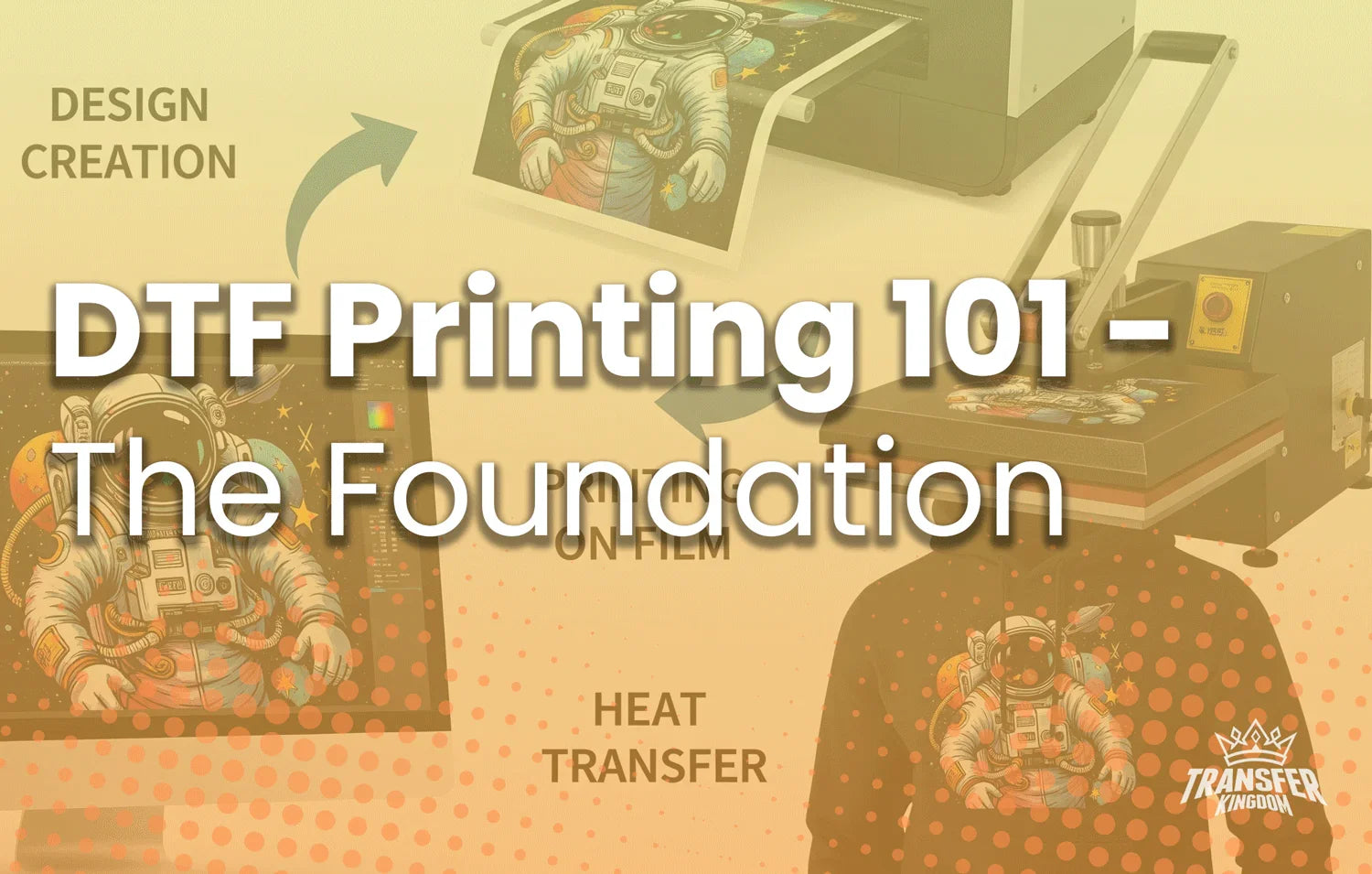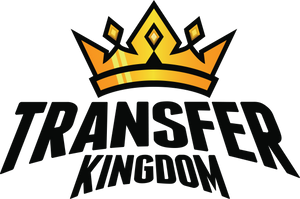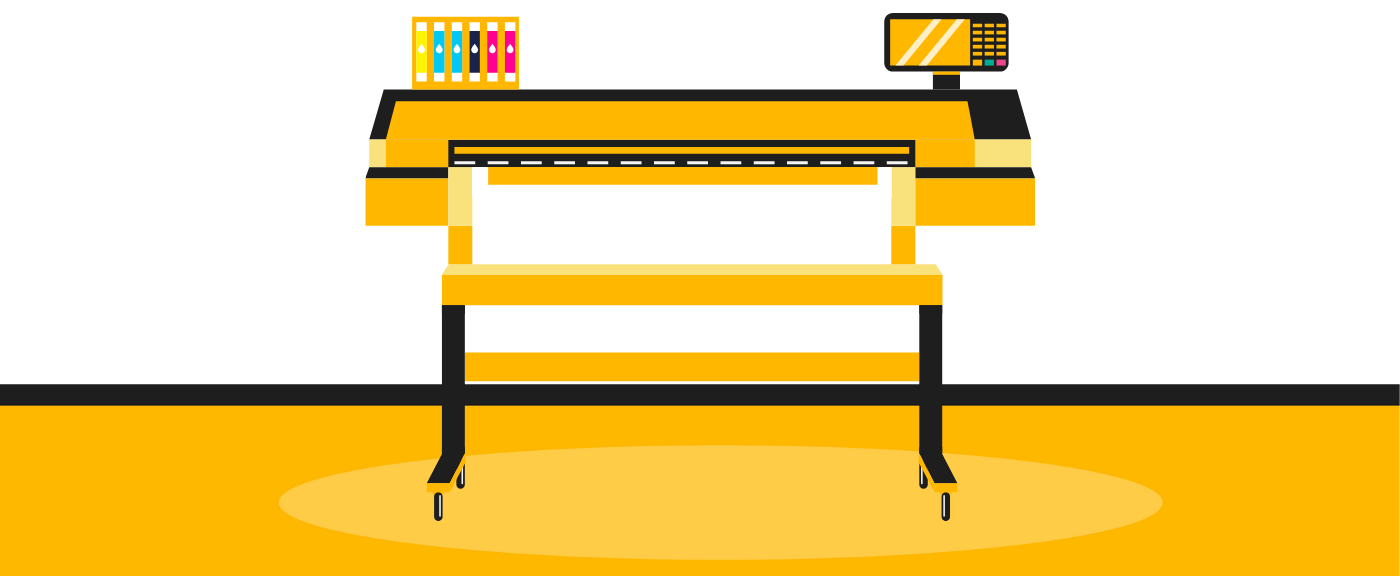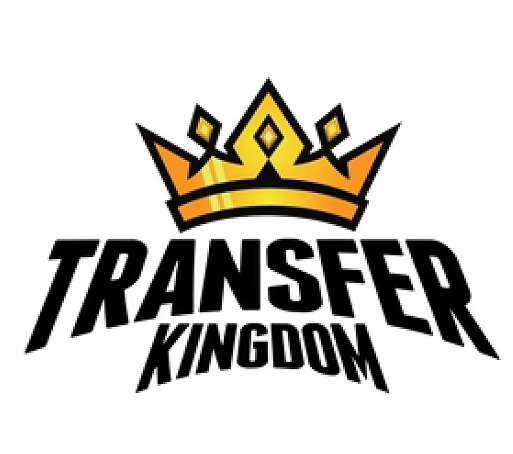What is DTF Printing? A Complete 101 Guide for Beginners

Table of Contents
DTF Printing 101: The Ultimate Guide for Custom Apparel Creators
Welcome to the world of custom apparel! If you're exploring ways to create vibrant, durable, and professional-quality designs, you've likely encountered the term DTF printing. Direct-to-Film has rapidly become one of the most transformative technologies in the industry. But what is it, and how does it work?
This guide serves as your foundational introduction to DTF transfer printing. We'll cover the core process, the necessary supplies, and why it's a game-changing option for everyone from hobbyists to established businesses.

What is DTF (Direct-to-Film) Printing?
At its core, DTF printing is a process that allows you to print a design directly onto a special piece of PET film. This printed design, held on the film, is then transferred onto a garment using a combination of a powdered adhesive and heat.
Unlike other methods that print directly onto the fabric, the two-step "print-then-press" nature of DTF is its superpower. It unlocks incredible versatility and quality, which we'll explore below. For a deeper dive into how DTF is revolutionizing the apparel world, you can explore what makes DTF transfers a game-changer.
👇The 5 Essential Supplies for DTF Printing
To get started with DTF printing, you need a few key components that work together. Whether you are buying finished transfers or producing them in-house, these five elements are always involved:
A DTF Printer: This is not a standard desktop printer. A specialized DTF printer is engineered to handle liquid textile inks and print a layer of white ink on top of the color layer, which is crucial for printing on dark fabrics.
Specialized DTF Inks: These are high-viscosity pigment inks formulated to bind to the DTF film and transfer cleanly to fabric without cracking. They come in Cyan, Magenta, Yellow, Black, and a critical White ink.
DTF Film: This is the carrier for your design. DTF films are coated PET sheets designed to hold the ink and release it perfectly under heat. They come in rolls or pre-cut sheets and can be either "hot peel" or "cold peel," indicating when you remove the film after pressing.
DTF Adhesive Powder: This magical powder is the key to the entire process. It’s a finely ground thermoplastic adhesive that is sprinkled over the wet ink on the film. When heated, it melts and creates the powerful bond that adheres the print to the fabric.
A Heat Press: A standard home iron will not work. A quality heat press is non-negotiable as it provides the consistent, high temperature and even pressure required to melt the adhesive powder and cure the ink permanently into the garment's fibers.

The DTF Printing Process: A Step-by-Step Breakdown
The journey from a digital file to a finished shirt follows a clear and consistent path.
Step 1: Print the Design onto the Film
The design is first sent from a computer to the DTF printer. The printer meticulously prints the design in reverse onto the DTF film. The CMYK colors go down first, followed by a layer of white ink on top.Step 2: Apply the Adhesive Powder
While the ink is still wet, the printed film is coated with DTF adhesive powder. The film is gently shaken to remove any excess powder, so the adhesive sticks only to the inked areas of the design.Step 3: Cure the Powdered Film
The powdered film is then placed in a curing oven or under a heat press set to hover mode (not touching). The heat melts the powder, turning it into a smooth, rubberized layer that looks like the back of a traditional plastisol transfer. At this point, the DTF transfer is complete and can be stored for later use.Step 4: Press the Design onto the Garment
The finished transfer is placed onto the garment in the desired position. It is then pressed in a heat press for about 10-15 seconds at around 320°F (160°C). For detailed guidance on getting this step right, check out our tips for perfectly sized and positioned transfers.Step 5: Peel and Finish
After pressing, the film is peeled away, leaving the vibrant, durable design permanently bonded to the fabric. A final, short post-press (2-5 seconds) with a protective sheet can enhance durability and give the print a matte finish.

Why Choose DTF Printing? The Core Benefits
| Feature | DTF Printing | Other Methods (DTG/Screen Print) |
| Fabric Compatibility | Works on Cotton, Polyester, Blends, Leather, Nylon | Often limited to cotton or requires special inks |
| Color Versatility | Works on any color fabric, including black | Can be challenging or require pre-treatment on darks |
| Feel of Print | Soft, flexible, and highly durable | Varies from soft (DTG) to thick (Screen Print) |
| Setup Cost | Low for ordering transfers; high for in-house | High initial cost for equipment |
| Best For | On-demand jobs, complex designs, varied materials | Bulk orders of simple designs (Screen Print) |
For creators who need to print multiple designs efficiently, learning about how to use a DTF gang sheet is a game-changer for saving time and material.
Frequently Asked Questions (FAQ) about DTF Printing
Can I use a regular inkjet printer for DTF?
No. You must use a dedicated DTF printing machine that is compatible with textile inks and has the ability to print a white ink layer. Using the wrong printer will result in clogs and poor-quality prints.
Is DTF printing durable? How many washes does it last?
DTF prints are known for their excellent durability. When applied correctly, a high-quality DTF transfer can last for 50+ washes without significant cracking, peeling, or fading.
What is the main difference between DTF and DTG (Direct-to-Garment)?
The main difference is the application process. DTG prints ink directly into the fabric's fibers, which works best on cotton and requires a pre-treatment solution for dark garments. DTF prints onto a film first and then transfers the design on top of the fabric, allowing it to work on a much wider variety of materials.
Do I have to buy all the equipment to get started?
Absolutely not! One of the biggest advantages of the DTF printing ecosystem is that you can purchase ready-to-press transfers from suppliers like Transfer Kingdom. This allows you to get all the benefits of DTF with just a heat press, eliminating the need for a large upfront investment in printers and curing ovens.
Why is white ink so important in DTF printing?
The white ink layer serves as an opaque foundation for your design. It is printed on top of the colors, acting as a base layer. When you press the transfer onto a dark garment (like a black or navy t-shirt), this white base prevents the shirt's color from dulling the design, ensuring your colors look bright and vibrant.
What does "curing" the adhesive powder actually do?
Curing is the crucial step of melting the loose adhesive powder on the printed film before it ever touches the garment. This process turns the grainy powder into a smooth, even, and stable sheet of adhesive on the back of your ink. This prepared adhesive layer is what ensures a clean and strong bond during the final heat press.
Can DTF printing be used for detailed photographs?
Yes, absolutely. DTF is one of the best methods for printing photorealistic images. Because it's a digital process, it can reproduce millions of colors and fine details with high accuracy. As long as your source photograph is a high-resolution file, the resulting print will be sharp and clear.
What is a "gang sheet" and why do people use it?
A "gang sheet" is a large sheet of DTF film where multiple different designs are printed together at the same time. Creators "gang" their designs together to maximize the use of every square inch of film, which significantly reduces waste and lowers the cost per print. It's the most efficient way to produce many smaller designs at once.
What happens if my heat press temperature is too high or too low?
Both scenarios will lead to poor results. If the temperature is too high, you risk scorching the fabric or melting the transfer, which can leave a shiny, unnatural finish. If the temperature is too low, the adhesive won't activate and cure properly, causing the transfer to peel up at the edges or come off entirely in the wash.
Does the type of fabric affect how the final DTF print looks?
Yes, slightly. While DTF works on almost any fabric, the fabric's texture can influence the final look. On a smooth fabric like polyester, the print will appear very crisp and smooth. On a more textured fabric like canvas or a coarse-weave cotton, the flexible transfer will conform to that texture, which can be a desirable effect. The color vibrancy, however, remains consistent across different materials.








